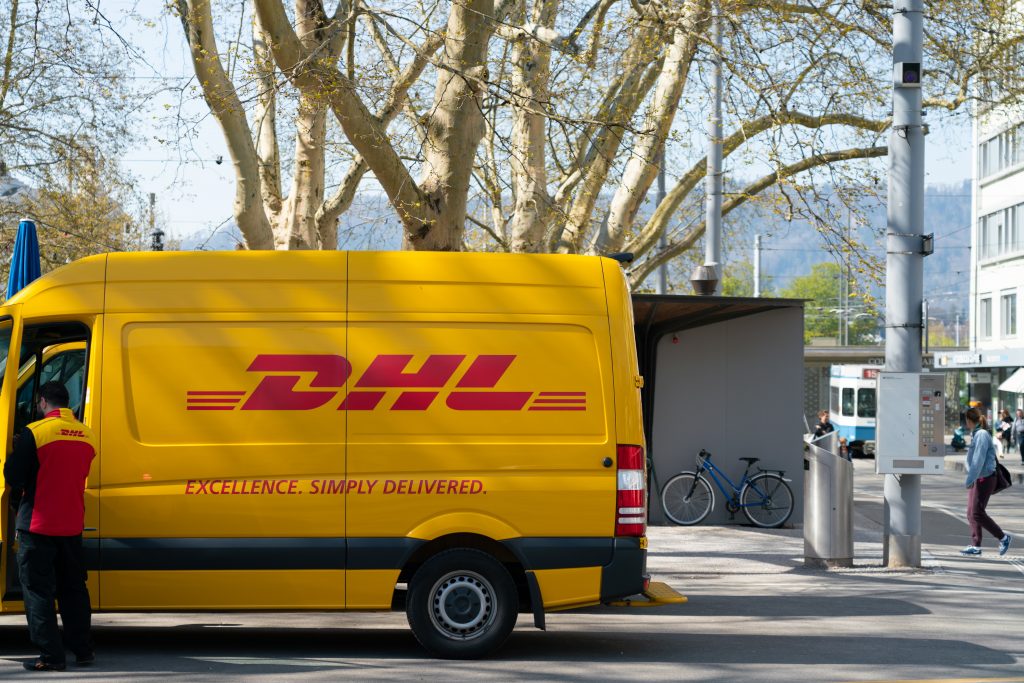With the rapid growth in e-commerce, parcel carriers face increasing performance challenges due to stricter access regulations in cities and towns and ever diminishing kerbside space availability and vehicles contributing to air pollution and greenhouse gas emissions. This is leading to interest in how carriers may collaborate to better negotiate the ‘last mile’.
Prof Tom Cherrett of the Transportation Research group has demonstrated through his work on urban freight and logistics that increased efficiency in the scheduling of ‘last mile’ deliveries can lead to substantive reductions in traffic congestion and emissions, as well as reductions in operating costs. The EPSRC funded Freight Traffic Control 2050 (FTC2050) project worked with industry to develop new optimisation approaches to co-optimise driving and walking delivery rounds in dense urban areas.
“Last-mile delivery operations are complex, and the conventional way of using a single mode of delivery (e.g. driving) is not necessarily an efficient strategy. A two-level parcel distribution model that combines walking and driving for a single driver has been investigated. The model aims to minimise the total travelling time by scheduling a vehicle’s routing and the driver’s walking sequence when making deliveries, taking decisions on parking locations into consideration.” [3.9]
Nguyen, T (2018) Optimising parcel deliveries in London using dual-mode routing, Journal of the Operational Research Society, DOI: https://doi.org/10.1080/01605682.2018.1480906

In London, new systems for last-mile parcel delivery using porters trialled by Gnewt Cargo and Ford showed that one parcel delivery van could do the work of four, reducing kerb side dwell time by up to 86%. Ford estimates that one van and a team of four couriers on foot or bicycle could be used to deliver the same number of parcels as five individual vans when working as part of a multi‑modal network. The parcel carrier drivers currently spend an average of 4.6 hours per day during their vehicle rounds sorting, unloading and delivering parcels on foot, walking, on average, 7.9 km (4.9 miles) while their vehicles are parked at the kerbside. The introduction of portering, where the driving and walking functions are separated using dedicated lifestyle couriers to deliver the parcels, would have reduced the vehicle dwell time at kerbside in the example studied by 90% (from 140 mins to 14 mins) and distance driven by 55% (8 km to 3.6km). This reduction in vehicle activity is offset by the walking which would increase by 76% from 5.8 km (without portering) to 10.2 km (using portering). If such reductions were projected for all next-day parcel activity across central London, one might expect overall kerbside dwell time to reduce by 1.98 million hours and distance travelled by 7.5 million vehicle kilometres per annum resulting from a move to walking parcels over the last-mile. [3.8] ESD event 11.04.2018, Singapore University of Technology and Design

ParcelHack19
A unique hackathon event, ‘ParcelHack19’ (https://go.citysprint.co.uk/parcelhack-2019) was run in conjunction with CitySprint, using anonymised courier round data to provide new insights into sustainable delivery and the use of local authority assets to aid logistics operations in urban areas. Last mile parcel delivery is characterised by many independent players competing in an ‘everyone-delivers-everywhere’ culture, leading to much replication of vehicle activity. ParcelHack set out to develop new ways of interpreting the impacts of last mile parcel delivery in London and other urban areas and to determine ways in which the negative externalities caused could be mitigated.
Themes:
- The impacts of last mile parcel operations on the environment, energy and fuel consumption
- The impacts of last mile parcel operations on congestion, infrastructure and land use
Delivery to halls of residence
“Growth in online shopping has led to increased numbers of small delivery vehicles in urban areas leading to a range of negative externalities. Young people are significant generators of home deliveries and, when clustered in university halls of residence, can generate considerable freight traffic to one location.”
Cherrett, T. Dickinson, J., McLeod, F., Sit, J., Bailey, G. and Whittle, G. (2017) Logistics impacts of student online shopping – Evaluating delivery consolidation to halls of residence. Transportation Research C, 78, 111-128. https://doi.org/10.1016/j.trc.2017.02.021
Prof Cherrett’s research has shown that courier visits to Halls of Residences in Southampton could be reduced from 56 to one per day as a result of Urban Consolidation Centres.
Halls of residence with 8000 students could generate 13,000 courier trips annually. The deliveries to students in halls could be consolidated onto fewer than 300 vehicles for an annual service cost of approximately £18 per student, reducing congestion, parking infringements and improving air quality. Analysis indicated student acceptance of a consolidated parcel service but operational challenges would include enforcement, performance risk, finance and delivery speed.

In general delivery companies and retailers should make use of computing technologies to assist drivers and provide customers with up-to-date delivery information. Retailers should also reconsider their delivery options to provide customers with slower, more sustainable delivery options to improve load consolidation, as well as enhanced systems for both providing goods to customers using collection points and locker banks, as well as using these facilities for improved goods return. The challenge is to understand where to locate such facilities in order to best serve consignees in the surrounding area, and the operating attributes of these facilities.[3.6]
EPSRC-funded
Freight Traffic Control 2050
(Prof Tom Cherrett)
I want it, and I want it now’ – demonstrating the transport and environmental impacts of last-mile parcel delivery.
Cherrett, T.
EPSRC: £10,000.00
1/04/19 → 30/09/20
Award date: 1/04/19
Freight Traffic Control 2050: transforming the energy demands of last-mile urban freight through collaborative logistics
Cherrett, T. & Bektas, T.
EPSRC: £419,591.00
1/04/16 → 30/08/19
Award date: 1/04/16
[3.6] https://www.theengineer.co.uk/last-mile-delivery-challenge-logistics/ 25.03.2020 Last mile delivery: the challenge for logistics providers
[3.7] Cherrett, T. Dickinson, J., McLeod, F., Sit, J., Bailey, G. and Whittle, G. (2017) Logistics impacts of student online shopping – Evaluating delivery consolidation to halls of residence. Transportation Research C, 78, 111-128. https://doi.org/10.1016/j.trc.2017.02.021
[3.8] Tom Cherrett (University of Southampton) Tackling the Last-mile – Using Human Porters as a Valid Mode of Freight Transport in London ESD event 11.04.2018, Singapore University of Technology and Design
[3.9] Nguyen, T; Bektas, T; Cherrett, T; McLeod, F; Allen, J; Bates, O; Piotrowska, M; Piecyk, M; Friday, A; Wise, S (2018) Optimising parcel deliveries in London using dual-mode routing, Journal of the Operational Research Society, DOI: https://doi.org/10.1080/01605682.2018.1480906
[5.8] Gnewt/Menzies (2018 UK. Sustainable Logistics Company of the Year)
[5.9] Ford Press Release 18/2/19. Estimates that one van and a team of four couriers on foot or bicycle could be used to deliver the same number of parcels as five individual vans when working as part of a multi‑modal network.
[5.11] Piecyk, M., Cherrett, T., Allen, J., McLeod, F., Piotrowska, M., Clarke, S., Bates, O. Bektas, T., Friday, A., Oakey, A. and Wise, S. (2019) Using On-Foot Porters for Last Mile Parcel Deliveries: Results of a Trial in Central London. Transportation Research Board Annual Meeting. Washington DC.

